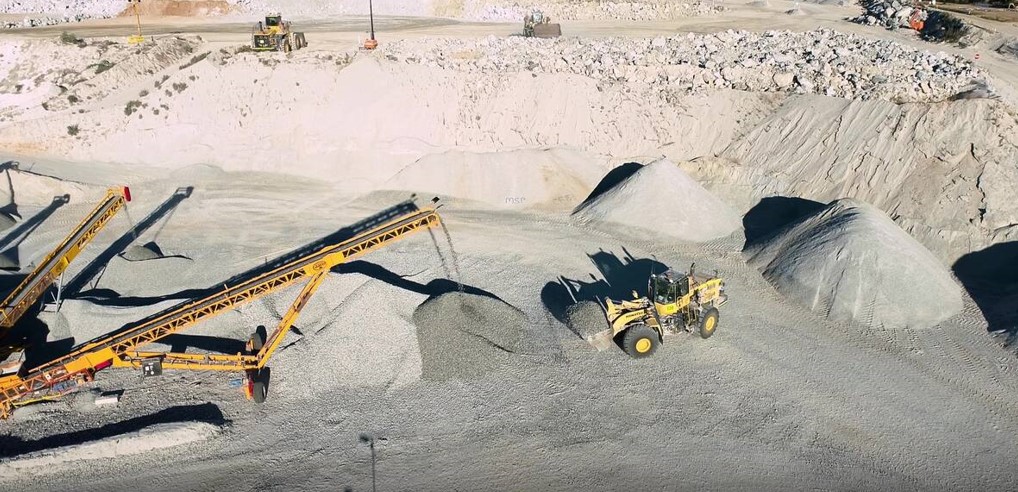Mt Cattlin utilizes a two-stage crushing system followed by dense medium separation (DMS) gravity recovery as the primary spodumene concentration process. The operation faces the challenge, typical of lithium mines, of dealing with basalt contamination: due to its high density – similar to that of spodumene – this high-iron, barren material is also concentrated by the DMS, contaminating the final product.
Keith Muller, general manager at Mt Cattlin, explained, “For us, it’s key to mine as clean as possible, but there’s always going to be contamination, mainly associated with contact or when there are basalt intrusions into the pegmatite. In these cases, there’s still lithium present in what we are mining, but it’s heavily contaminated with basalt. We segregate that from our clean ore sources and we stockpile it to be processed at a later stage.”
Successful test work at the TOMRA Test Center revealed that the TOMRA PRO secondary laser sorter would be an effective solution. TOMRA’s team was so confident of its performance, that it agreed on the very tight performance guarantees set by Galaxy Resources.
The sorter has been operating since Sept. 29, 2021, sorting the contaminated low-grade ore. Keith Muller explains the process: “The ore is screened into two size ranges: 14 to 25 mm and 25 to 75 mm, and then fed into the sorter. The sorter product is then recirculated into the crushing circuit, crushed to –14-mm particle size and fed into the wet plant and DMS.”–The sorter has been operating since Sept. 29, 2021, sorting the contaminated low-grade ore. Keith Muller explains the process: “The ore is screened into two size ranges: 14 to 25 mm and 25 to 75 mm, and then fed into the sorter. The sorter product is then recirculated into the crushing circuit, crushed down to –14-mm particle size and fed into the wet plant and DMS.”
Matthew Bateman, principal metallurgist at Galaxy Resources, agreed. He said, “We have 1.2 million tonnes to treat, and we will have treated the best part of it in 9 to 12 months. With the TOMRA sorter, we are using far more contaminated ore than we would previously have processed.”
Scott Green, process enhancement co-ordinator, added, “It can’t be said enough how valuable it was to have the availability of TOMRA’s team whenever we needed it, especially when you were remotely commissioning a machine we had never dealt with before. Being shown the key points they have to look at, what to keep an eye on before they even started the machine, gave the operators the confidence that they knew the machine before they even turned it on. We’ve never had this from a supplier before.”
For more information, visit www.TOMRA.com/Mining.
